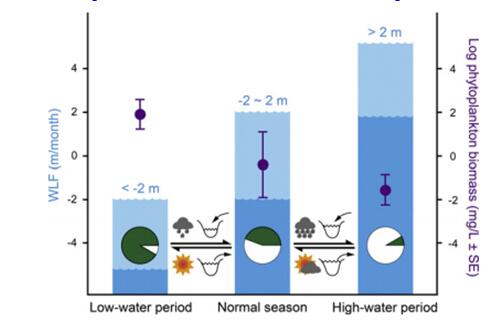Water resource in reservoirs has provided ecosystem services for human in field of water supply, flood control, power generation, cultivation, etc for more than half a century. China is the largest dam-building country in the world, with the total estimated storage capacity of reservoirs being triple that of natural lakes. So reservoirs play a increasingly prominent role to the development of economy and society. However, There exist different degrees of eutrophication problem in reservoirs of our country and especilly in subtropical ones. They are at high risk of algae blooms occurrence. Bulding reservoirs is one of the most intense manifestations which human activities affect the surface water cycle and they regulate distribution of water resources. Although accumulated large quantity of data of reservoir hydrologic hydrodynamic all over the world, researches for phytoplankton ecology in reservoirs are still lacking and lagging until now. Phytoplankton assemblages are extremely important components of reservoir ecosystem, playing a fundamental and key role in material circulation, energy flow, pollutants degradation and water self-purification, etc. Previous studies have shown that planktonic assemblages including blooms cyanobacteria can response dramaticlly to the change of light, temperature, nutrient. However, under the background of climate change and human activity, we still know little about the ecological coupling relationship between water yield, water quality and plankton, especially for the effect to planktonic assemblages and blooms cyanobacteria in the process of reservoir hydrologic shifts.
Aquatic Ecohealth Group (Jun Yang’s research team), Institute of Urban Environment, Chinese Academy of Sciences, established long-term ecological reservoir observatories along a human activity intensity (urbanization) gradient in basin of Fujian province, and systematicly studied the water yield, water quality and plankton of four reservoirs in Xiamen. They find that planktonic ecosystem in reservoirs showed an apparent regime switch along with monthly water level fluctuations (WLF) by using one year of data. Cyanobacteria significantly increased the dominance and biomass at low water level stage. The cyanobacteria dominant phase was mainly dominated by Cylindrospermopsis, Microcystis, and Raphidiopsis. An increase in water level can reduce the cyanobacteria biomass directly by a dilution effect. More importantly, enhancing the ratio of beneficial algae could indirectly decrease the dominance of harmful algaeby changing the other ecological factors (e.g., pH, luminous environment, nutrient loads, nutritive salt, etc.). WLF causing by climate changes (heavy rainfall and drough) and artificial water transfer (water storage and drainage) both had the same ecological effect to cyanobacteria and algae community. Given that WLF is likely to intensify under future conditions of climate changes and human activities. Therefore the results of the study are of great significance in the prevention and control of cyanobacterial blooms for medium and small reservoirs based on water resources scheduling, water quality safety guarantee and Tthe protection of the water ecological system integrity.
The results of the study are published in the international journal of environmental science, Science of the Total Environment, 2016, 557/558: 445-452(Jun Yang, Hong Lv, Jun Yang*, Lemian Liu, Xiaoqing Yu, Huihuang Chen. Decline in water level boosts cyanobacteria dominance in subtropical reservoirs). This work was supported by the National Basic Research Program of China, the National Natural Science Foundation of China, and the Natural Science Foundation for Distinguished Young Scholars of Fujian Province.
Full text URL: http://www.sciencedirect.com/science/article/pii/S0048969716305186

Conceptual diagram of the effect of climate change and human activity on WLF and phytoplankton biomass.